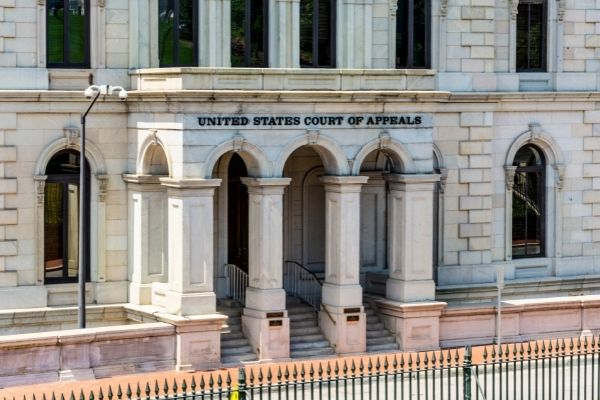Demystifying the Process of Federal Appeals: What You Need to Know
Navigating the intricate realm of government allures can usually seem like going across uncharted waters for those unfamiliar with the process. Understanding the nuances of appellate court territory, the intricacies of submitting a notice of allure, offering a compelling brief, and making a persuasive oral argument are crucial elements that can considerably influence the outcome of a case. By unwinding the layers of intricacy surrounding federal allures, individuals can acquire a more clear understanding right into the mechanisms that govern this critical point of the legal system.
Understanding Federal Appeals Refine
Looking into the elaborate world of the government appeals procedure unveils a systematic and structured journey with the judicial system - best federal appeal lawyers in new york. Federal charms act as a vital system for reviewing choices made by lower courts. Recognizing this process is vital for any person included in lawful procedures at the government level
The process usually starts with a party dissatisfied with a reduced court's ruling filing a notification of appeal. This causes a testimonial by a higher court, where a panel of courts assesses the legal disagreements presented by both events. Briefs describing the lawful thinking behind each event's placement are sent, and oral arguments might be heard to clarify intricate issues.
The appellate court's decision is based upon a detailed examination of the lower court's proceedings and the arguments offered. The judges do not concentrate however reconsider facts on whether lawful errors occurred that affected the reduced court's choice. When the appellate court gets to a decision, it can attest, turn around, remand, or change the reduced court's ruling, supplying quality and finality to the legal conflict. Understanding this procedure is essential for navigating the complexities of federal appeals properly.
Appellate Court Territory Described

Appellate courts have territory over details kinds of situations, commonly those including lawful errors, step-by-step concerns, or questions of legislation as opposed to valid conflicts. The territory of appellate courts is normally detailed in laws and legislations that govern the court system. Comprehending appellate court jurisdiction is critical for celebrations entailed in the allures process as it identifies whether a situation is qualified for testimonial and the degree to which the appellate court can interfere in the reduced court's choice.
Declaring a Notification of Charm
The preliminary step in commencing the government charms process involves submitting a Notice of Appeal with the appropriate appellate court. west virginia federal appeal attorney. This vital file formally alerts the court and the other parties entailed in the instance that the appealing event read here means to look for a review of the reduced court's decision. Submitting a Notification of Allure is a strict procedural demand that establishes the appellate process moving
When preparing the Notification of Appeal, it is vital to make sure compliance with the certain guidelines and standards of the appropriate appellate court. The record should normally consist of details such as the instance name, the reduced court's name, the date of the judgment being appealed, and a concise declaration indicating the premises for the appeal.
Timeliness is of the significance when submitting a Notification of Appeal. Missing the target date for sending this record can result in the allure being dismissed, highlighting the relevance of prompt and exact initiation of the appeals process. It is suggested to seek legal advice to navigate the complexities of filing a Notification of Appeal successfully.
Instruction and Oral Disagreement
In the appellate process, providing created briefs and taking part in oral arguments play pivotal duties in supporting for the appealing party's position prior to the appellate court. Briefs are thorough lawful files that detail the parties' disagreements, lawful authorities, and analysis sustaining their positions. These written entries give the court with a detailed understanding of the truths of the situation, the appropriate legislation, and why the appealing event believes the lower court's decision ought to be rescinded.
Complying with the submission and testimonial of the briefs, dental disagreements use the events a chance to further clarify their settings, deal with any kind of questions the appellate courts may have, and highlight bottom lines from their created briefs. Oral arguments are a chance for the attorneys to convince the courts with spoken advocacy and actions to inquiries from the bench.

Getting the Appellate Court Choice

Final Thought
Understanding the appellate court territory, submitting a notice of allure, preparing briefs, and providing oral debates are all important parts of this process. Ultimately, obtaining the appellate court decision can give clarity and resolution to legal disputes.
As we advance from comprehending the federal charms process to exploring the complexities of appellate court territory, a fundamental facet comes to light concerning the authority and restrictions of these higher courts in the lawful landscape. Appellate court jurisdiction refers to the range of instances that a specific appellate court has the power to decide and review upon. Unlike test courts that hear instances for the first time, appellate courts are restricted to reviewing decisions made by reduced courts. Understanding appellate court jurisdiction is critical for parties entailed in the charms process as it determines whether an instance is qualified for evaluation and the extent to which the appellate court can interfere in the reduced court's decision.
Whether the appellate court attests, turns around, or remands the lower court's choice, recognizing the ramifications of the ruling is critical for all celebrations entailed in the appellate procedure.
Comments on “Top Federal Crime Lawyer: Specialized Legal Protection for Federal Offenses”